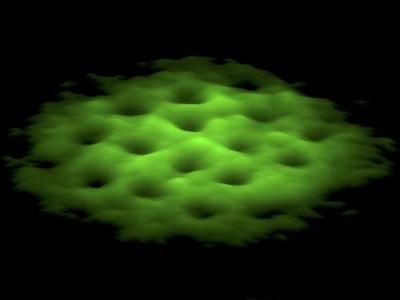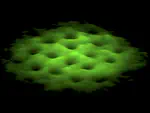Vortices in Superfluids

Our group uses superfluids of light and superfluids formed of ultracold atoms to address fundamental physics questions such as the mechanisms underlying turbulence, and cooperative behaviour in many-body quantum systems, and relies on bridging experimental techniques from the atomic physics, nonlinear optics and imaging communities.
What are the mechanisms underlying turbulent fluid flow? How do these flows facilitate transport of energy and materials?
Turbulent flows, such as the disordered, chaotic tangle of eddies and whirlpools generated as water rushes past a boulder, are ubiquitous in nature. Turbulent mixing, e.g. in ocean flows, plays an important role in the transfer of energy, materials, and organisms. Despite their familiarity, turbulent flows are among the most challenging scientific subjects to understand theoretically, and the underlying mechanisms that generate turbulence and dictate its properties remain largely unknown. The unique properties of superfluid mixtures can be used to reduce turbulent flow to its component parts, allowing us to studying how quantum eddies and whirlpools interact to transfer energy throughout the turbulent fluid.
What are the mechanisms underlying the emergence of cooperative behaviour from a system of many interacting quantum particles, and how does this cooperative behaviour change when the system is driven out of equilibrium?
Society relies on man-made materials, from the electronic components in our phones to the synthetic fibres we use to keep warm. A new class of quantum materials promises to harness the bizarre properties of quantum mechanics to radically change the way we process information and transmit power. In these quantum materials, properties such as superfluidity (fluid flow without viscosity) or superconductivity (conduction of electricity without resistance), emerge as a result of cooperative behaviour of the microscopic particles that make up the materials. The mechanisms behind this cooperative behaviour are elusive, and difficult to understand from first principles. Novel quantum materials, such as quantum droplets formed in a mixture of two-species of ultracold atoms, can help us to study experimentally how quantum particles interact cooperatively to produce macroscopic properties. This allows us to isolate the role of quantum effects such as fluctuations and entanglement in macroscopic emergent phenomena.
We have an open postdoc position, advertisement expected soon! Please contact us if you are interested.
Latest News


